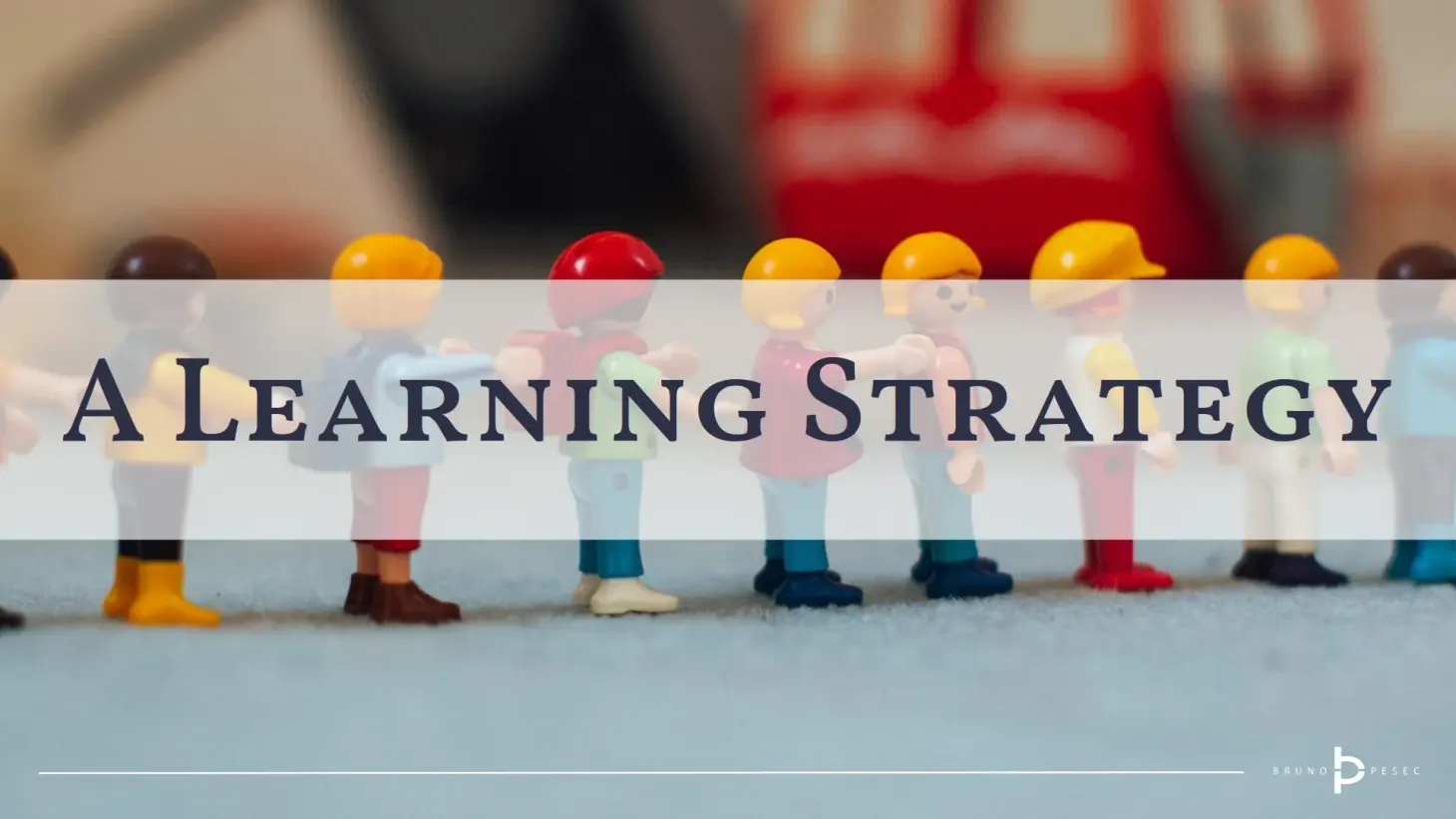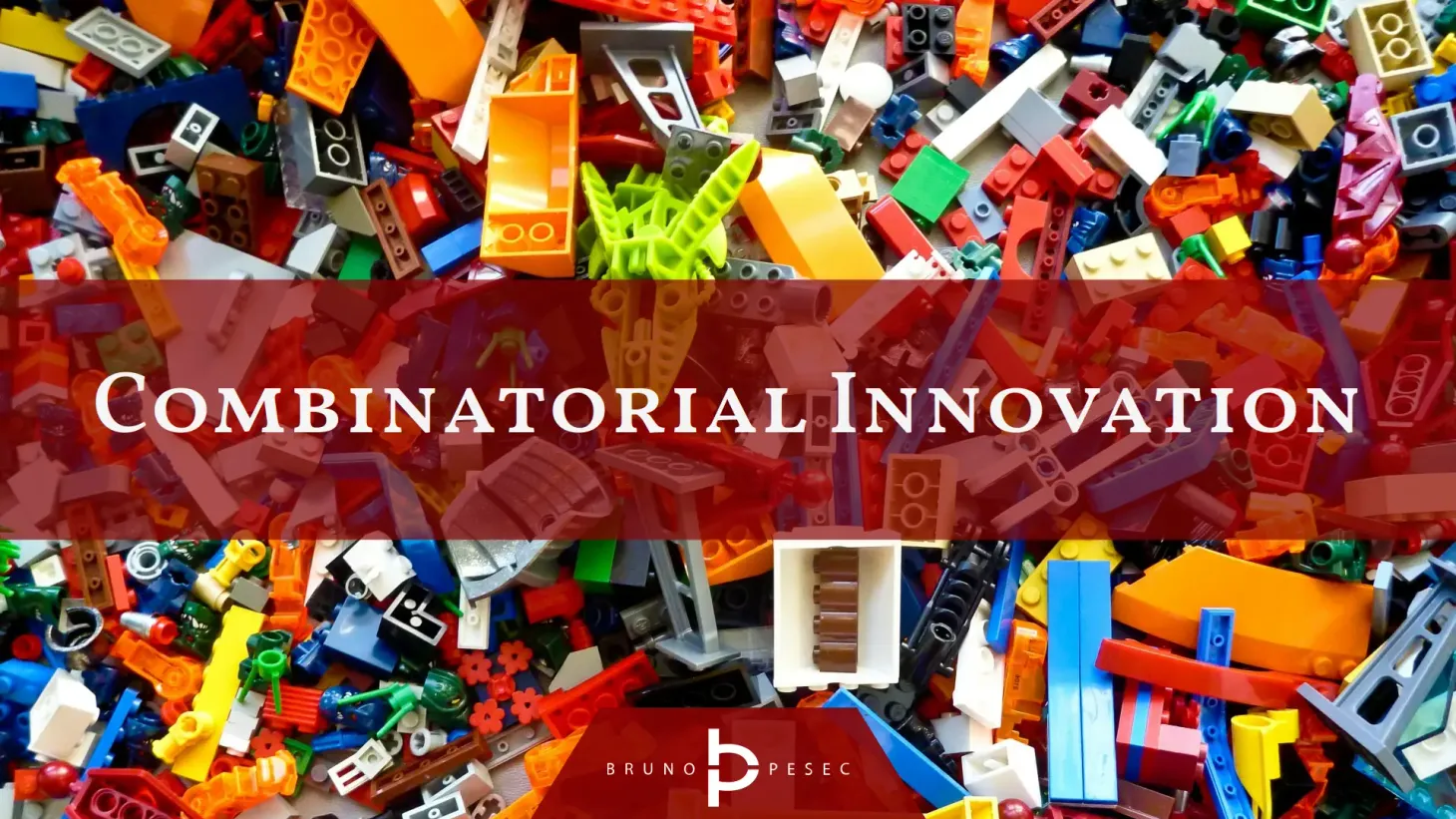The Business Model Canvas Explained
Don't use it as a wallpaper, and accept that almost everything you put into the canvas has some degree of uncertainty.
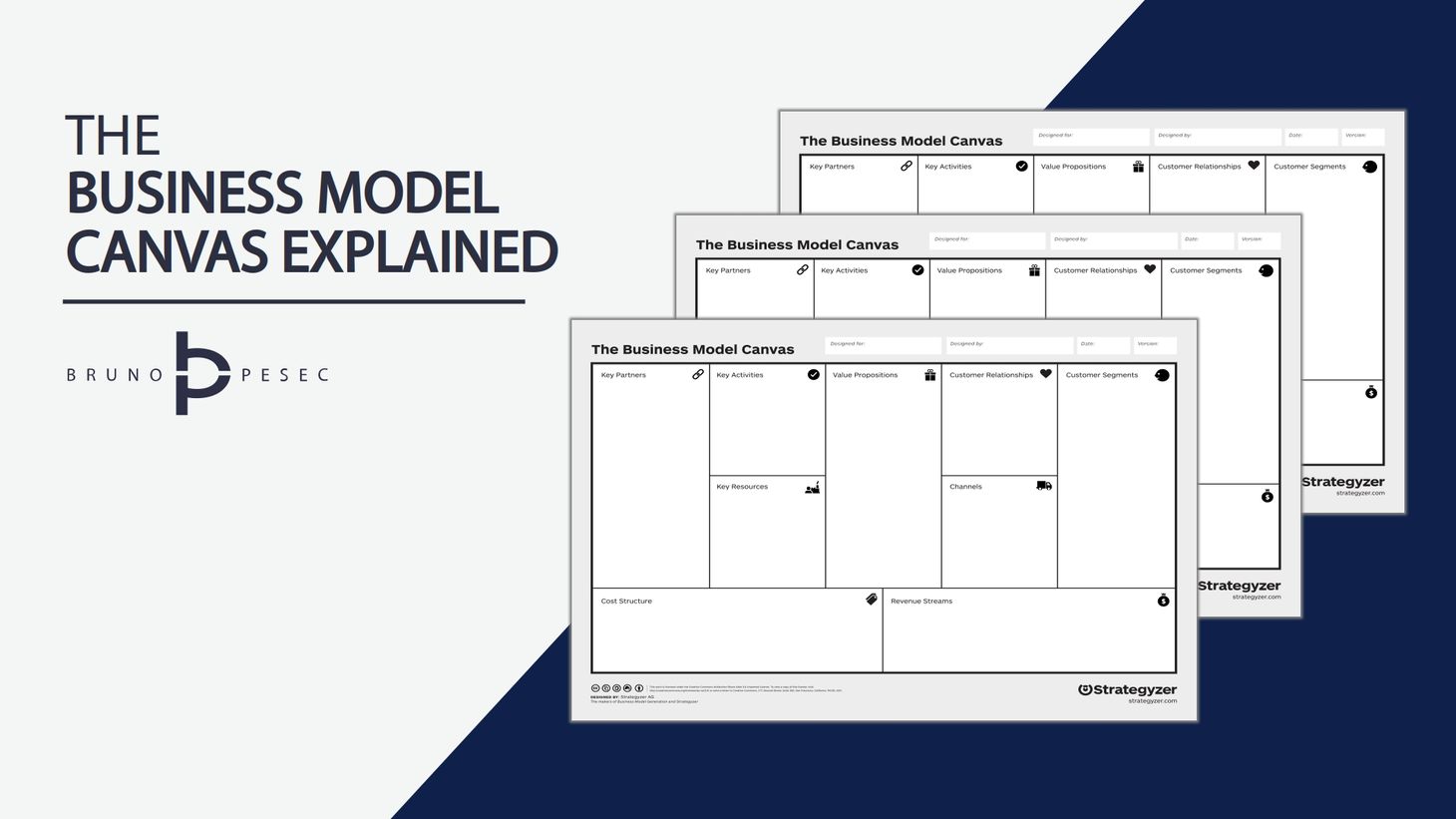
Table of Contents
Have you ever wondered why are there so many canvases out there?
It seems like every consultant or boutique agency in the innovation space has at least one.
Well, we can blame that on the success of the business model canvas.
The bad boy that started it all.
In the ancient 2000s Alexander Osterwalder published his doctoral thesis The Business Model Ontology: A Proposition In A Design Science Approach in which he outlined most common elements of the business model, and proposed a way to map them relationally.
Then he built a community around, ultimately leading to the book Business Model Generation, and the canvas as we know it today.
So, what is a business model?
Defining a business model
In the simplest words, a business model describes the logic of how an organisation creates, delivers, and captures value.
Clayton Christensen et al., assert that business model is made up of four elements:
- a value proposition for customers;
- resources, such as people, money, and technology;
- the processes that the organisation uses to convert inputs to finished products or services; and
- the profit formula that dictates the margins, asset velocity, and scale required to achieve an attractive return.
Business model canvas has all four elements, albeit structured in nine blocks:
- customer segments,
- value propositions,
- channels,
- customer relationships,
- revenue streams,
- key resources,
- key activities,
- key partnerships, and
- cost structure.
Here are both definitions visualised:
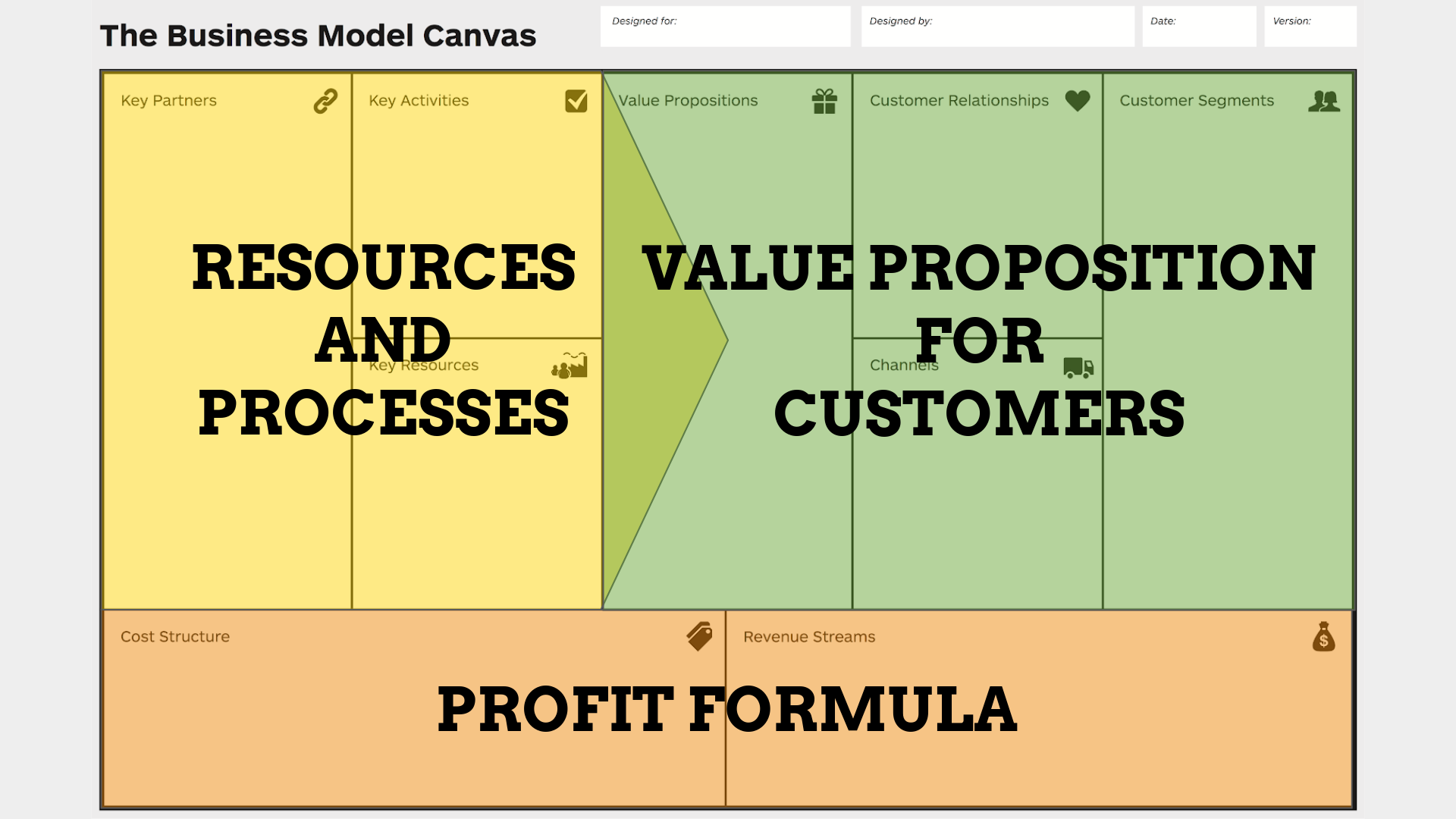
But why should you map a business model? What’s the point?
When should you map a business model?
In high performing organisations innovation is one of key pillars of sustaining long term business success. (If you dare to delve into academic literature on the topic, begin here.)
During my work and study, I’ve observed that large organisations struggle with application of innovation as a viable tactic to achieve their business and corporate agenda.
Contemporary technology-enabled organisations like Google, Amazon, and venture capital funded Silicon Valley start-ups are lauded as innovation leaders. The mainstream narrative is to point either at technology, product, or organisational culture as a sole source of competitive advantage and as explanation to why they are performing so well. I’d argue that’s not the entire case.
Organisations’ ability to create, reconfigure, and execute their business model(s) is what I believe to be the core differentiator.
This creation and reconfiguration of business models is what we usually call business model innovation.
If you want to improve the current business model, then you should start with mapping the existing one.
If you want to create a new business model, you can start with blank slate. Since you most likely don’t live in a vacuum, you’ll need to map existing business models at some time.
Both are the cases of business model innovation, although with varying degrees of uncertainty.
Before you jump into mapping your business model(s), it’s worth investing some time into understanding all blocks of the business model canvas.
Business model canvas explained
Strategyzer, Osterwalder’s company, has the best materials explaining basic elements of the business model canvas. Most of them are free, so I suggest you start at the source.
Begin with the two minute explainer video:
Then get the canvas:
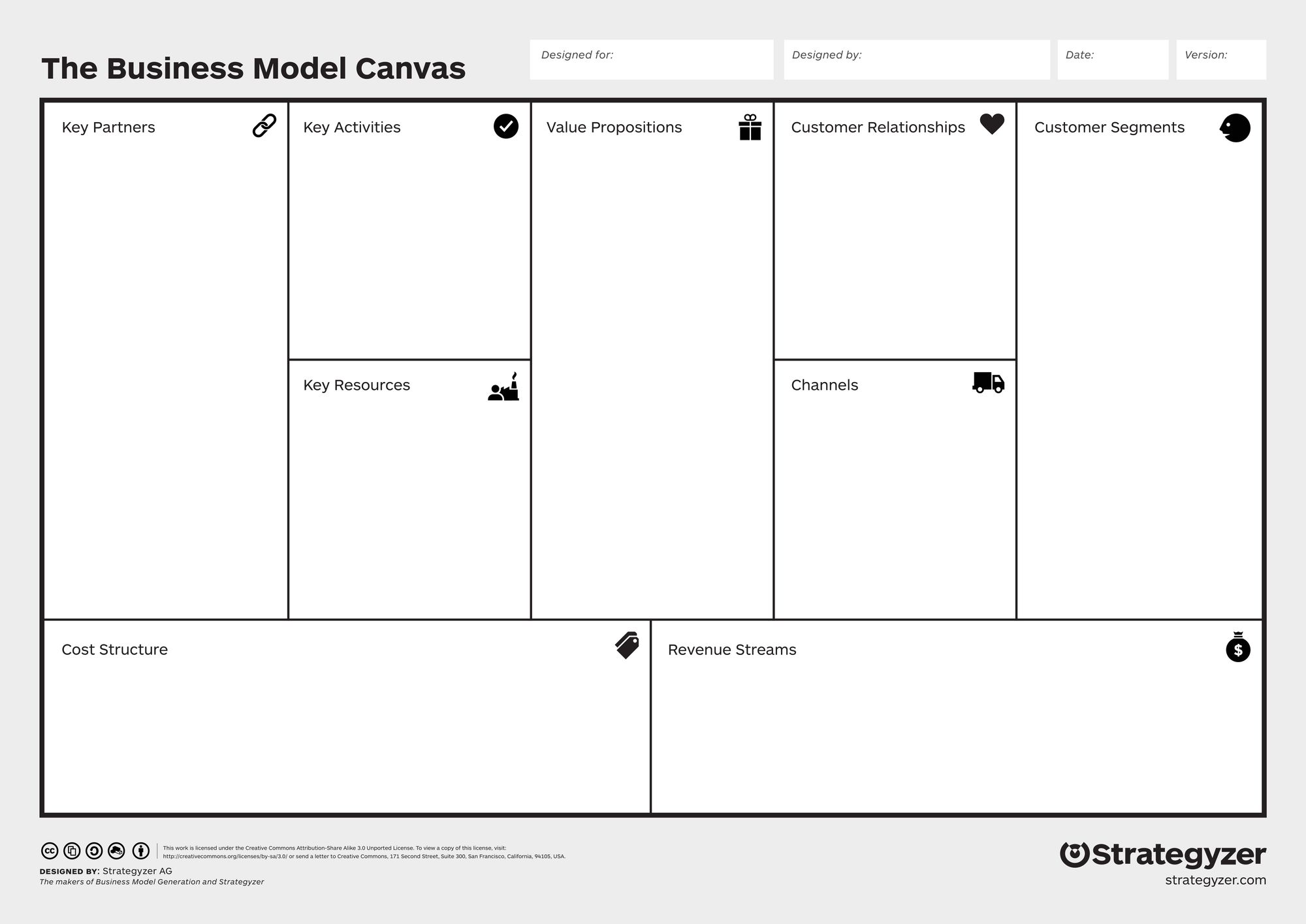
Download links for canvas and manual.
Building blocks explained
Next, read more about each block.
You can do so in the order below or as you need them.
As you go through these materials I suggest you take notes and then write a one-sentence description of each block in your own words. That will help you remember it better, and will make it easier if you need to teach others, since you’ll be more authentic.
For further study I’d suggest getting the Business Model Generation book.
Note: Block explanations below are from the Strategyzer support website.
Customer Segments ∞
Your Customer Segments are the different groups of people or organizations your enterprise aims to reach and serve. This includes users who might not generate revenues, but which are necessary for the business model to work (e.g. users of Google’s free search engine are essential to their advertising-based business model, or doctors are usually an essential, but non revenue-generating part of a pharmaceutical company’s business model).
Questions to ask
- For whom are we creating value?
- Who are our most important customers, clients, or users?
More About Customer Segments
Customers comprise the heart of your business model. Without (profitable) customers, your company can not survive for long. In order to better satisfy your customers, you may group them into distinct segments with common needs, jobs-to-get-done, common behaviours, or other attributes. Your business model may have one or several large or small Customer Segments. You must make a conscious decision about which segments to serve and which segments to ignore. Once this decision is made, your business model can be carefully designed around a strong understanding of specific customer needs and jobs-to-be-done. Customer groups represent separate segments if:
- Their needs require and justify a distinct Value Proposition
- They are reached through different Distribution Channels
- They require different types of relationships
- They have a substantially different profitability
- They are willing to pay for different aspects of the Value Proposition
Types of Customer Segments
There are different types of Customer Segments. Here are some examples:
Mass market
Business models focused on mass markets don’t distinguish between different Customer Segments. The Value Propositions, Distribution Channels, and Customer Relationships all focus on one large group of customers with broadly similar needs and problems. This type of business model is often found in the consumer electronics sector.
Niche market
Business models targeting niche markets cater to specific, specialized Customer Segments. The Value Propositions, Distribution Channels, and Customer Relationships are all tailored to the specific requirements of a niche market. Such business models are often found in supplier-buyer relationships. For example, many car part manufacturers depend heavily on purchases from major automobile manufacturers.
Segmented
Some business models distinguish between market segments with slightly different needs and problems. The retail arm of a bank like Credit Suisse, for example, may distinguish between a large group of customers, each possessing assets of up to U.S. $100,000, and a smaller group of affluent clients, each of whose net worth exceeds U.S. $500,000. Both segments have similar but varying needs and problems. This has implications for the other building blocks of Credit Suisse’s business model, such as the Value Proposition, Distribution Channels, Customer Relationships, and Revenue streams. Consider Micro Precision Systems, which specializes in providing outsourced micromechanical design and manufacturing solutions. It serves three different Customer Segments—the watch industry, the medical industry, and the industrial automation sector—and offers each slightly different Value Propositions.
Diversified
An organization with a diversified customer business model serves two unrelated Customer Segments with very different needs and problems. For example, in 2006 Amazon.com decided to diversify its retail business by selling “cloud computing” services: online storage space and on-demand server usage. Thus it started catering to a totally different Customer Segment—Web companies—with a totally different Value Proposition. The strategic rationale behind this diversification can be found in Amazon.com’s powerful IT infrastructure, which can be shared by its retail sales operations and the new cloud computing service unit.
Multi-sided platforms (or multi-sided markets)
Some organizations serve two or more interdependent Customer Segments. A credit card company, for example, needs a large base of credit card holders and a large base of merchants who accept those credit cards. Similarly, an enterprise offering a free newspaper needs a large reader base to attract advertisers. On the other hand, it also needs advertisers to finance production and distribution. Both segments are required to make the business model work.
Value Proposition ∞
Your Value Proposition describes the bundle of products and services that create value for a specific Customer Segment.
Questions to ask
- What value do we deliver to the customer?
- Which one of our customer's problems are we helping to solve?
- Which job are we helping the customer get done?
- Which customer needs are we satisfying?
- What bundles of products and services are we offering to each Customer Segment?
More About Value Propositions
Your Value Proposition is the reason why customers turn to your company over another. It solves your customer’s problem or satisfies your customer’s need. Each Value Proposition consists of a selected bundle of products and/or services that caters to the requirements of a specific Customer Segment. In this sense, your Value Proposition is an aggregation, or bundle, of benefits that your company offers customers. Some Value Propositions may be innovative and represent a new or disruptive offer. Others may be similar to existing market offers, but with added features and attributes.
Types of Value Propositions
Your Value Proposition creates value for a Customer Segment through a distinct mix of elements catering to that segment’s needs. Values may be quantitative (e.g. price, speed of service) or qualitative (e.g. design, customer experience). Elements from the following non-exhaustive list can contribute to customer value creation:
Newness
Some Value Propositions satisfy an entirely new set of needs that customers previously didn’t perceive because there was no similar offering. This is often, but not always, technology related. Cell phones for instance, created a whole new industry around mobile telecommunication. On the other hand, products such as ethical investment funds have little to do with new technology.
Performance
Improving product or service performance has traditionally been a common way to create value. The PC sector has traditionally relied on this factor by bringing more powerful machines to market. But improved performance has its limits. In recent years, for example, faster PCs, more disk storage space, and better graphics have failed to produce corresponding growth in customer demand.
Customization
Tailoring products and services to the specific needs of individual customers or Customer Segments creates value. In recent years, the concepts of mass customization and customer co-creation have gained importance. This approach allows for customized products and services, while still taking advantage of economies of scale.
“Getting the job done”
Value can be created simply by helping a customer get certain jobs done. Rolls-Royce understands this very well: its airline customers rely entirely on Rolls- Royce to manufacture and service their jet engines. This arrangement allows customers to focus on running their airlines. In return, the airlines pay Rolls- Royce a fee for every hour an engine runs.
Design
Design is an important but difficult element to measure. A product may stand out because of superior design. In the fashion and consumer electronics industries, design can be a particularly important part of the Value Proposition.
Brand/status
Customers may find value in the simple act of using and displaying a specific brand. Wearing a Rolex watch signifies wealth, for example. On the other end of the spectrum, skateboarders may wear the latest “underground” brands to show that they are “in.”
Price
Offering similar value at a lower price is a common way to satisfy the needs of price-sensitive Customer Segments. But low-price Value Propositions have important implications for the rest of a business model. No frills airlines, such as Southwest, easyJet, and Ryanair have designed entire business models specifically to enable low cost air travel. Another example of a price-based Value Proposition can be seen in the Nano, a new car designed and manufactured by the Indian conglomerate Tata. Its surprisingly low price makes the automobile affordable to a whole new segment of the Indian population. Increasingly, free offers are starting to permeate various industries. Free offers range from free newspapers to free e-mail, free mobile phone services, and more (see p. 88 for more on FREE).
Cost reduction
Helping customers reduce costs is an important way to create value. Salesforce.com, for example, sells a hosted Customer Relationship management (CRM) application. This relieves buyers from the expense and trouble of having to buy, install, and manage CRM software themselves.
Risk reduction
Customers value reducing the risks they incur when purchasing products or services. For a used car buyer, a one-year service guarantee reduces the risk of post-purchase breakdowns and repairs. A service-level guarantee partially reduces the risk undertaken by a purchaser of outsourced IT services.
Accessibility
Making products and services available to customers who previously lacked access to them is another way to create value. This can result from business model innovation, new technologies, or a combination of both. NetJets, for instance, popularized the concept of fractional private jet ownership. Using an innovative business model, NetJets offers individuals and corporations access to private jets, a service previously unaffordable to most customers. Mutual funds provide another example of value creation through increased accessibility. This innovative financial product made it possible even for those with modest wealth to build diversified investment portfolios.
Convenience/usability
Making things more convenient or easier to use can create substantial value. With iPod and iTunes, Apple offered customers unprecedented convenience searching, buying, downloading, and listening to digital music. It now dominates the market.
Channels ∞
Your Channels describe how your company communicates with and reaches your Customer Segments to deliver your Value Proposition.
Questions to ask
- Through which Channels do our Customer Segments want to be reached?
- How are we reaching them now?
- How are our Channels integrated? Which ones work best?
- Which ones are most cost-efficient?
- How are we integrating them with customer routines?
More About Channels
Your communication, distribution, and sales Channels comprise your company's interface with customers. Your Channels are customer touch points that play an important role in the customer experience. Your Channels serve several functions, including:
- Raising awareness among customers about a company's products and services
- Helping customers evaluate a company's Value Proposition
- Allowing customers to purchase specific products and services
- Delivering a Value Proposition to customers
- Providing post-purchase customer support
Types of Channels
Finding the right mix of Channels to satisfy how customers want to be reached is crucial in bringing a Value Proposition to market. You can choose between reaching your customers through your own Channels, through partner Channels, or through a mix of both.
Owned Direct
Owned Channels can be an in-house sales force or a Website, or retail stores owned or operated by the organization. Owned Channels have higher margins, but can be costly to put in place and to operate.
Partner Indirect
Partner Channels are indirect and span a whole range of options, such as wholesale distribution, retail, or partner-owned Web sites. Partner Channels lead to lower margins, but they allow an organization to expand its reach and benefit from partner strengths.
Customer Relationships ∞
Your Customer Relationships describe the types of relationships your company establishes with specific Customer Segments.
Questions to ask
- What type of relationship does each of our Customer Segments expect us to establish and maintain with them?
- Which ones have we established?
- How costly are they?
- How are they integrated with the rest of our business model?
More About Customer Relationships
Your company should clarify the type of relationship it wants to establish with each Customer Segment. Relationships are established through your different Channels. Relationships can range from personal to automated, from transactional to long-term, and can aim to acquire customers, retain customers, or boost sales (upselling). The type of Customer Relationships you put in place deeply influence the overall customer experience.
Types of Customer Relationships
We can distinguish between several types of Customer Relationships, which may co-exist in a company’s relationship with a particular Customer Segment.
Transactional
This means there is no real relationship between the company and the customer. The company interacts with the customer on a transactional basis. A kiosk at an airport, for example, usually doesn’t really establish a relationship with its customers.
Long-term
This means a long-term and maybe even deep relationship is established between the company and the customer. The company interacts with the customer on a recurring basis.
Personal assistance
This relationship is based on human interaction. The customer can communicate with a real customer representative to get help during the sales process or after the purchase is complete. This may happen onsite at the point of sale, through call centers, by e-mail, or through other means.
Dedicated personal assistance
This relationship involves dedicating a customer representative specifically to an individual client. It represents the deepest and most intimate type of relationship and normally develops over a long period of time. In private banking services, for example, dedicated bankers serve high net worth individuals. Similar relationships can be found in other businesses in the form of key account managers who maintain personal relationships with important customers.
Self-service
In this type of relationship, a company maintains no direct relationship with customers. It provides all the necessary means for customers to help themselves.
Automated services
This type of relationship mixes a more sophisticated form of customer self-service with automated processes. For example, personal online profiles give customers access to customized services. Automated services can recognize individual customers and their characteristics, and offer information related to orders or transactions. At their best, automated services can stimulate a personal relationship (e.g. offering book or movie recommendations).
Communities
Increasingly, companies are utilizing user communities to become more involved with customers/prospects and to facilitate connections between community members. Many companies maintain online communities that allow users to exchange knowledge and solve each other’s problems. Communities can also help companies better understand their customers. Pharmaceutical giant GlaxoSmithKline launched a private online community when it introduced alli, a new prescription-free weight-loss product. GlaxoSmithKline wanted to increase its understanding of the challenges faced by overweight adults, and thereby learn to better manage customer expectations.
Co-creation
More companies are going beyond the traditional customer-vendor relationship to co-create value with customers. Amazon.com invites customers to write reviews and thus create value for other book lovers. Some companies engage customers to assist with the design of new and innovative products. Others, such as YouTube.com, solicit customers to create content for public consumption.
Switching costs
Switching costs indicate how easy or how difficult it is for a customer to switch to a different alternative. For example, when a customer of a data storage provider stores all his data in a proprietary format it might be difficult for him to switch to an alternative provider.
Revenue Streams ∞
Your Revenue Streams represent the ways your company generates cash from each Customer Segment.
Questions to ask
- For what value are our customers really willing to pay?
- How would they prefer to pay?
- How much does each Revenue Stream contribute to overall revenues in terms of percentages of the total?
More About Revenue Streams
If customers comprise the heart of your business model, Revenue Streams are its arteries. You must ask yourself, for what value is each Customer Segment truly willing to pay? Successfully answering that question allows your firm to generate one or more Revenue Streams from each Customer Segment. Each Revenue Stream may have different pricing mechanisms, such as fixed list prices, bargaining, auctioning, market dependent, volume dependent, or yield management. A business model can involve transactional revenues resulting from one-time customer payments (e.g. a sales), or recurring revenues (e.g. a subscription).
Types of Revenue Streams
There are several ways to generate Revenue Streams:
Asset sale
The most widely understood Revenue Stream derives from selling ownership rights to a physical product. Amazon.com sells books, music, consumer electronics, and more online. Fiat sells automobiles, which buyers are free to drive, resell, or even destroy.
Usage fee
This Revenue Stream is generated by the use of a particular service. The more a service is used, the more the customer pays. A telecom operator may charge customers for the number of minutes spent on the phone. A hotel charges customers for the number of nights rooms are used. A package delivery service charges customers for the delivery of a parcel from one location to another.
Subscription fees
This Revenue Stream is generated by selling continuous access to a service. A gym sells its members monthly or yearly subscriptions in exchange for access to its exercise facilities. World of Warcraft Online, a Web-based computer game, allows users to play its online game in exchange for a monthly subscription fee. Nokia’s Comes with Music service gives users access to a music library for a subscription fee.
Lending/Renting/Leasing
This Revenue Stream is created by temporarily granting someone the exclusive right to use a particular asset for a fixed period in return for a fee. For the lender this provides the advantage of recurring revenues. Renters or lessees, on the other hand, enjoy the benefits of incurring expenses for only a limited time rather than bearing the full costs of ownership. Zipcar.com provides a good illustration. The company allows customers to rent cars by the hour in North American cities. Zipcar.com’s service has led many people to decide to rent rather than purchase automobiles.
Licensing
This Revenue Stream is generated by giving customers permission to use protected intellectual property in exchange for licensing fees. Licensing allows rightsholders to generate revenues from their property without having to manufacture a product or commercialize a service. Licensing is common in the media industry, where content owners retain copyright while selling usage licenses to third parties. Similarly, in technology sectors patentholders grant other companies the right to use a patented technology in return for a license fee.
Brokerage fees
This Revenue Stream derives from intermediation services performed on behalf of two or more parties. Credit card providers, for example, earn revenues by taking a percentage of the value of each sales transaction executed between credit card merchants and customers. Brokers and real estate agents earn a commission each time they successfully match a buyer and seller.
Advertising
This Revenue Stream results from fees for advertising a particular product, service, or brand. Traditionally, the media industry and event organizers relied heavily on revenues from advertising. In recent years other sectors, including software and services, have started relying more heavily on advertising revenues.
Key Resources ∞
Your Key Resources describe the most important assets required to make your business model work.
Questions to ask
- What Key Resources do our Value Propositions require?
- Our Distribution Channels?
- Customer Relationships?
- Revenue Streams?
More About Key Resources
Every business model requires Key Resources. Your resources allow your enterprise to create and offer a Value Proposition, reach markets, maintain relationships with Customer Segments, and earn revenues. Different Key Resources are needed depending on the type of business model. A microchip manufacturer requires capital-intensive production facilities, whereas a microchip designer focuses more on human resources. Key resources can be physical, financial, intellectual, or human. Key resources can be owned or leased by the company or acquired from key partners.
Types of Key Resources
Key Resources can be categorized as follows:
Physical
This category includes physical assets such as manufacturing facilities, buildings, vehicles, machines, systems, point-of-sales systems, and distribution networks. Retailers like Wal-Mart and Amazon.com rely heavily on physical resources, which are often capital-intensive. The former has an enormous global network of stores and related logistics infrastructure. The latter has an extensive IT, warehouse, and logistics infrastructure.
Intellectual Property
Intellectual property resources such as brands, proprietary knowledge, patents and copyrights, partnerships, and customer databases are increasingly important components of a strong business model. Intellectual property resources are difficult to develop but when successfully created may offer substantial value. Consumer goods companies such as Nike and Sony rely heavily on brand as a Key Resource. Microsoft and SAP depend on software and related intellectual property developed over many years. Qualcomm, a designer and supplier of chipsets for broadband mobile devices, built its business model around patented microchip designs that earn the company substantial licensing fees.
Human
Every enterprise requires human resources, but people are particularly prominent in certain business models. For example, human resources are crucial in knowledge-intensive and creative industries. A pharmaceutical company such as Novartis, for example, relies heavily on human resources: its business model is predicated on an army of experienced scientists and a large and skilled sales force.
Financial
Some business models call for financial resources and/or financial guarantees, such as cash, lines of credit, or a stock option pool for hiring key employees. Ericsson, the telecom manufacturer, provides an example of financial resource leverage within a business model. Ericsson may opt to borrow funds from banks and capital markets, then use a portion of the proceeds to provide vendor financing to equipment customers, thus ensuring that orders are placed with Ericsson rather than competitors.
Key Activities ∞
The Key Activities Building Block describes the most important things a company must do to make its business model work
Questions to ask
- What Key Activities do our Value Propositions require?
- Our Distribution Channels?
- Customer Relationships?
- Revenue streams?
More About Key Activities
Your business model calls for a number of Key Activities. These are the most important actions your company must perform to operate successfully. Like Key Resources, they are required to create and offer a Value Proposition, reach markets, maintain Customer Relationships, and earn revenues. And like Key Resources, Key Activities differ depending on business model type. For software maker Microsoft, Key Activities include software development. For PC manufacturer Dell, Key Activities include supply chain management. For consultancy McKinsey, Key Activities include problem-solving.
Types of Key Activities
Key Activities can be categorized as follows (based on research by two scholars called Charles B. Stabell and Øystein D. Fjeldstad)
Production
These activities relate to designing, manufacturing, and delivering a product in substantial quantities and/or of superior quality. Production activity dominates the business models of manufacturing firms.
Problem solving
Key Activities of this type relate to coming up with new solutions to individual customer problems. The operations of consultancies, hospitals, and other service organizations are typically dominated by problem-solving activities. Their business models call for activities such as knowledge management and continuous training.
Platform/network
Business models designed with a platform as a Key Resource are dominated by platform or network related Key Activities. Networks, matchmaking platforms, software, and even brands can function as a platform. eBay’s business model requires that the company continually develop and maintain its platform: the Web site at eBay.com. Visa’s business model requires activities related to its Visa® credit card transaction platform for merchants, customers, and banks. Microsoft’s business model requires managing the interface between other vendors’ software and its Windows® operating system platform. Key Activities in this category relate to platform management, service provisioning, and platform promotion.
Key Partnerships ∞
The Key Partnerships Building Block describes the network of suppliers and partners that make the business model work.
Questions to ask
- Who are our Key Partners?
- Who are our key suppliers?
- Which Key Resources are we acquiring from partners?
- Which Key Activities do partners perform for us?
More About Key Partnerships
Companies forge partnerships for many reasons, and partnerships are becoming a cornerstone of many business models. Companies create alliances to optimize their business models, reduce risk, or acquire resources. We can distinguish between four different types of partnerships, which are strategic alliances between non-competitors, coopetition: strategic partnerships between competitors, joint ventures to develop new businesses, and buyer-supplier relationships to assure reliable supplies.
Types of Key Partnerships
It can be useful to distinguish between three motivations for creating partnerships:
Optimization and economy of scale
The most basic form of partnership or buyer-supplier relationship is designed to optimize the allocation of resources and activities. It is illogical for a company to own all resources or perform every activity by itself. Optimization and economy of scale partnerships are usually formed to reduce costs, and often involve outsourcing or sharing infrastructure.
Reduction of risk and uncertainty
Partnerships can help reduce risk in a competitive environment characterized by uncertainty. It is not unusual for competitors to form a strategic alliance in one area while competing in another. Blu-ray, for example, is an optical disc format jointly developed by a group of the world’s leading consumer electronics, personal computer, and media manufacturers. The group cooperated to bring Blu-ray technology to market, yet individual members compete in selling their own Blu-ray products.
Acquisition of particular resources and activities
Few companies own all the resources or perform all the activities described by their business models. Rather, they extend their own capabilities by relying on other firms to furnish particular resources or perform certain activities. Such partnerships can be motivated by needs to acquire knowledge, licenses, or access to customers. A mobile phone manufacturer, for example, may license an operating system for its handsets rather than developing one in-house. An insurer may choose to rely on independent brokers to sell its policies rather than develop its own sales force.
Cost Structure ∞
Your Cost Structure describes all costs incurred to operate your business model.
Questions to ask
- What are the most important costs inherent in our business model?
- Which Key Resources are most expensive?
- Which Key Activities are most expensive?
More About Cost Structure
This building block describes the most important costs incurred while operating under a particular business model. Creating and delivering value, maintaining Customer Relationships, and generating revenue all incur costs. Such costs can be calculated relatively easily after defining Key Resources, Key Activities, and Key Partnerships. Some business models, though, are more cost-driven than others. So-called “no frills” airlines, for instance, have built business models entirely around low-Cost Structures.
Types of Cost Structure
Naturally enough, costs should be minimized in every business model. But low Cost Structures are more important to some business models than to others. Therefore it can be useful to distinguish between two broad classes of business model Cost Structures: cost-driven and value-driven (many business models fall in between these two extremes):
Cost-driven
Cost-driven business models focus on minimizing costs wherever possible. This approach aims at creating and maintaining the leanest possible Cost Structure, using low price Value Propositions, maximum automation, and extensive outsourcing. No frills airlines, such as Southwest, easyJet, and Ryanair typify cost-driven business models.
Value-driven
Some companies are less concerned with the cost implications of a particular business model design, and instead focus on value creation. Premium Value Propositions and a high degree of personalized service usually characterize value-driven business models. Luxury hotels, with their lavish facilities and exclusive services, fall into this category.
Cost Structure Attributes
A Cost Structures can have the following attributes:
Economies of scale
Cost advantages that a business enjoys as its output expands. Larger companies, for instance, benefit from lower bulk purchase rates. This and other factors cause average cost per unit to fall as output rises.
Economies of scope
Cost advantages that a business enjoys due to a larger scope of operations. In a large enterprise, for example, the same marketing activities or Distribution Channels may support multiple products.
Fixed cost
Costs that remain the same despite the volume of goods or services produced. Examples include salaries, rents, and physical manufacturing facilities. Some businesses, such as manufacturing companies, are characterized by a high proportion of fixed costs.
Variable cost
Costs that vary proportionally with the volume of goods or services produced. Some businesses, such as music festivals, are characterized by a high proportion of variable costs.
How to use the business model canvas
It is almost deceptively easy to use.
You need:
- a business model canvas (printed, drawn, or taped),
- sticky or pin notes, and
- something to write with (markers are best).
Here are steps to use it with your team:
- Make sure that everybody who is participating in creating a business model understands the task at hand.
- Show them the video and explain each block.
- Show them an example video (e.g. on Google or Nespresso)
- Explain that you’ll try to describe the idea or new business model using the canvas.
- Agree on the time and get to it.
- Create several canvases and discuss if they make any sense at all.
- Select the most promising one for further consideration.
For more detailed guides you can study following:
- The 20 Minute Business Plan: Business Model Canvas Made Easy by Alexander Cowan, and
- How To Fill In A Business Model Canvas by Isaac Jeffries.
Remember that Osterwalder’s original intent was to use the canvas as a tool for visual inquiry into business models.
In other words, you shouldn’t use it as a wallpaper, and accept that almost everything you put into the canvas has some degree of uncertainty.
It is important to find the most uncertain elements and learn more about them. This is where Lean Startup style of experimentation is most useful.
May the fastest learner win!
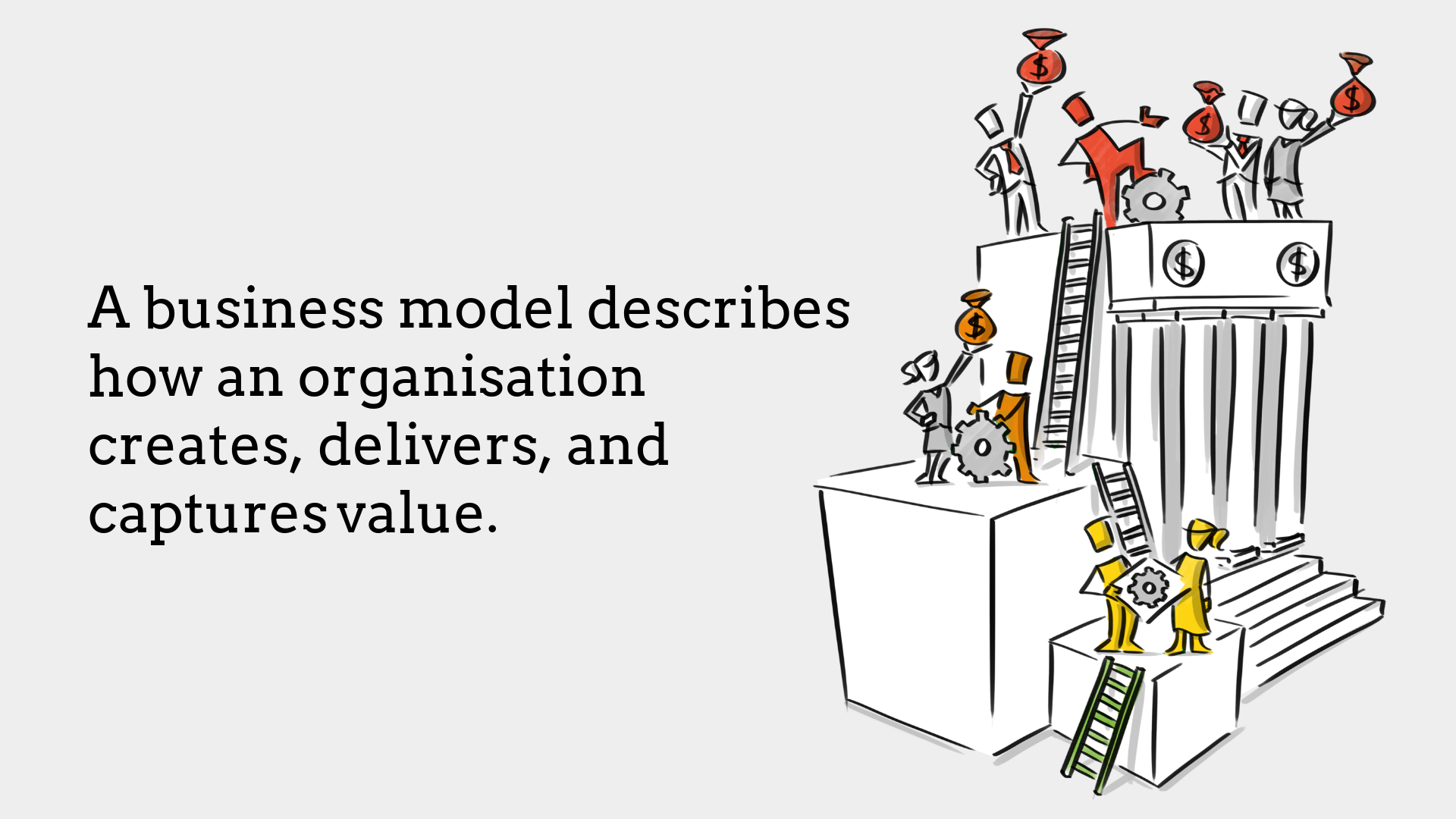
A variant of this post was originally published on Playing Lean blog.
For a more detailed take on Customer Segments and Value Propositions I suggest Making the most out of the Value Proposition Canvas:
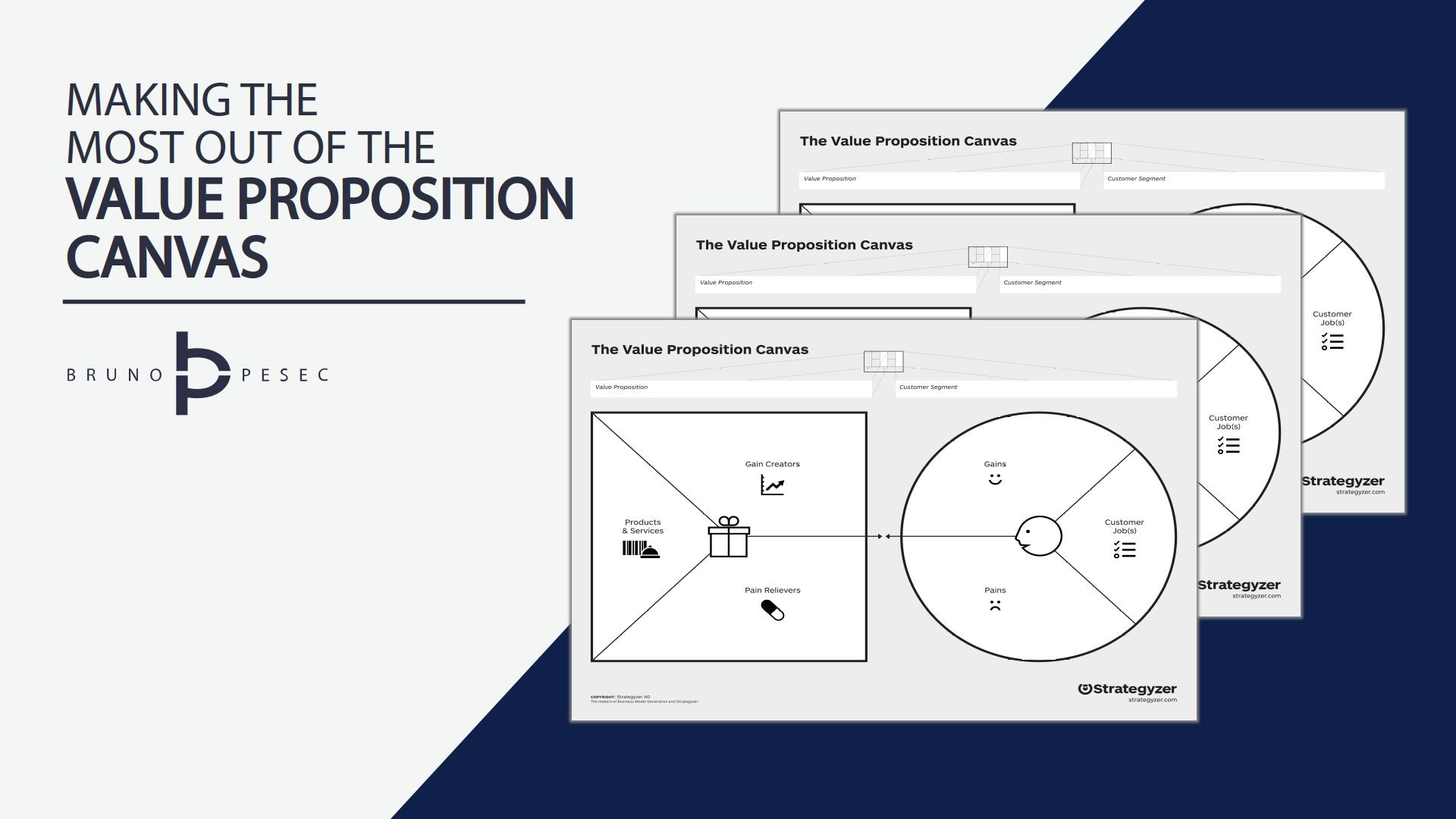
To test your riskiest assumptions I recommend the Step-by-step guide for designing Lean Experiments:
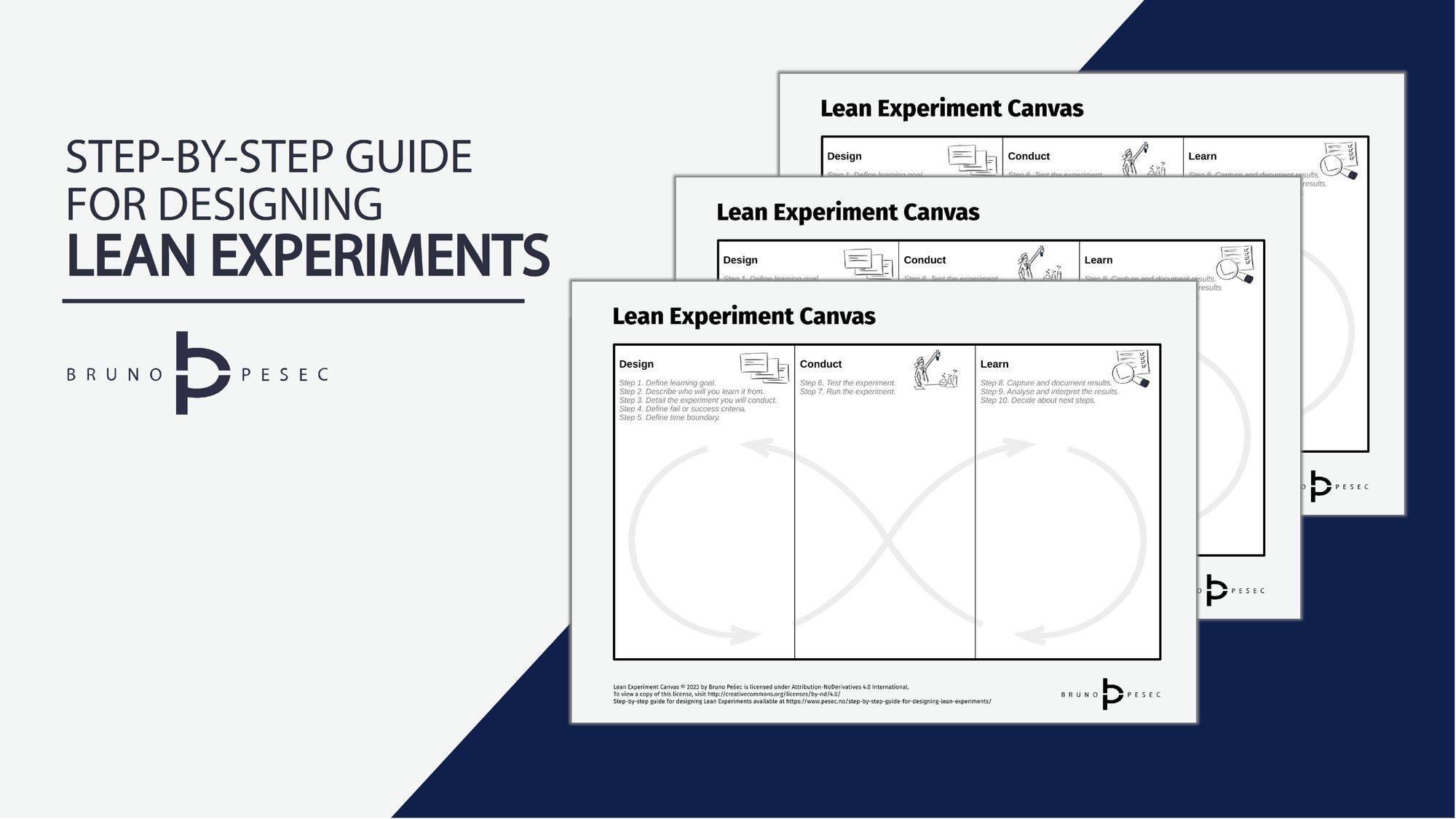
Bruno Unfiltered
Subscribe to get the latest posts delivered right to your inbox. No spam. Only Bruno.



